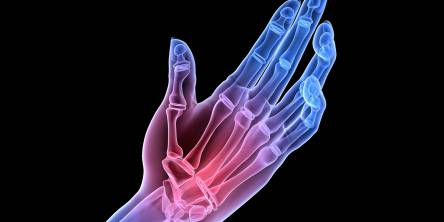Is Your Neck Causing You a Headache?

According to the World Health Organization (WHO), half to three-quarters of adult persons globally experienced a headache in the past year. Unfortunately, tension headaches are one of the most prevalent symptoms you can have. Furthermore, some tension headaches resemble migraine headaches, making matters worse.
Your average painkiller may not always be effective in treating your headache. Headaches can be caused by a variety of factors, but one of the most prevalent is neck pain.
Why Is Your Neck Giving You a Headache?
In general, neck discomfort is caused by a variety of factors, including muscles at the base of the head and the top of the neck. Overall, neck pain can lead to headaches, but headaches can also cause neck pain. Headaches can be caused by specific neck disorders, such as chronic neck stress, traumas, or inflammation.
There are two types of headaches that can result from a neck problem.
Cervicogenic Headache
Cervicogenic headaches cause both head and neck pain and can mimic migraine headache symptoms. In most cases, it begins as a dull discomfort in your neck and can progress to your temple, forehead, and other areas of your face.
Overall, a cervicogenic headache originates in your cervical spine and could be caused by a condition affecting your joint, muscle, nerve, or disc. Cervicogenic headaches are known to cause discomfort in a specific area of the head rather than the entire head.
You may suffer a stiff neck, muscle strain, or other issues. Cervicogenic headaches are caused by neck sprains, fractures, or arthritis, but they can also occur as a result of a whiplash injury. If a person experiences discomfort for an extended period of time, they may need to seek physical therapy.
Occipital Neuralgia
Occipital neuralgia headaches can cause pain due to underlying neck issues. Injuries to the occipital nerve can cause intense pain. Other symptoms include sensitive scalp, neck movement pain, and pain around the eyes. It's important to remember that occipital neuralgia is not the same as a migraine attack, despite their similarities.
There are numerous relaxation techniques that can be used to alleviate neck problems, but if any of them become too severe, you should seek medical assistance to receive a more exact diagnosis.
4 Remedies for Head Pain, Neck Pain, or Tension HeadacheNerv
e blocks, massage therapy, and other treatments are typical possibilities. However, if you have a mild neck problem, you can try the following relief tips:
1. Improve your posture
Bad posture, such as slouching to see your computer monitor, can definitely contribute to neck pain because it puts extra weight on it. If you become aware that you have poor posture, consider standing or sitting tall and straight.
Making your home and work environments more ergonomic is one of the most effective strategies to improve your posture. If you spend a lot of time sitting, you should consider investing in a nice chair.
2. Improve your sleep
f you're sleeping in an unhealthy position, try sleeping in one that supports your head and neck. This can include sleeping on your back or side with a pillow to support your head.
3. Do exercise
Exercising, particularly low-impact exercises, can assist in relaxing your body and relieve neck pain and headaches. Try not to overstrain yourself, as this might lead to further pain.
4. Apply heat and cold compresses
Depending on the type of headache you have, you may want to use a cold compress to relieve it. On the other hand, if you're experiencing general neck discomfort or stiffness, you can use a heating pad to relieve it.
When Should You See a Doctor?
In general, you should visit a doctor if your health condition worsens. Some of the most prevalent indications are:
- Pain runs down your arms;
- A stiff neck causes high fevers;
- Seizures, dizziness, blurred vision, or slurred speech;
- Nausea or unexpected weight loss;
- Headaches are caused by activities like sneezing, coughing, running, or bending.
Similar Articles
Veins on the skin that produce swelling may indicate varicose veins. Varicose veins are a vein disorder, and their role is to return blood from the leg to the heart. The specific cause of varicose veins, a prevalent condition, is unknown.
A healthy spine is the foundation of a functioning body. It supports your frame while allowing you to bend, flex, and move more freely. However, most people neglect the importance of spine health until they have a back condition.
Whether you're having trouble moving body parts or experiencing worsening joint discomfort, an orthopedic doctor can help. They can treat anything from a minor strain to complex treatments such as shoulder replacement. The appropriate treatment from an orthopedic expert at the right time might relieve your pain and improve your symptoms in less time.
When it comes to trauma, professionals in the mental health sector readily admit that no single style of therapy or intervention is appropriate for every case or individual.
Rheumatoid arthritis (RA) is a type of autoimmune disease that occurs when the body's immune system attacks the lining of joints, causing inflammation and causing symptoms like pain and stiffness. RA usually affects both sides of the body in a similar way, but small joints of the hands and feet are often affected first, often knuckle joints of the fingers.
An electroencephalogram (EEG) is a test that measures the electrical activity in the brain. Healthcare experts utilize it to evaluate and comprehend neurological illnesses, sleep disorders, and brain damage.
So, your back decided to stage a mutiny and gift you with a herniated disc. Lovely. Now what? If you’re imagining a future filled with endless discomfort and groaning every time you get out of bed, don’t fret. There are plenty of ways to tackle a herniated disc and get back to living your best, pain-free life.
Back pain – it’s not just a matter of “I lifted a heavy box, and now my back hurts.” It’s often the result of a complex dance between our minds and bodies, with stress, anxiety, and emotions playing lead roles. If you’ve ever woken up with a stiff back after a tough week or felt your spine twinge just from reading a long email chain, you’re not alone.
Chronic pain is a medical problem that affects many people around the world. Unlike acute pain, which is a short-term response of the body to tissue damage, chronic pain lasts longer, often without obvious physical damage. It can last from several months to several years, and its consequences can affect all aspects of a person's life









